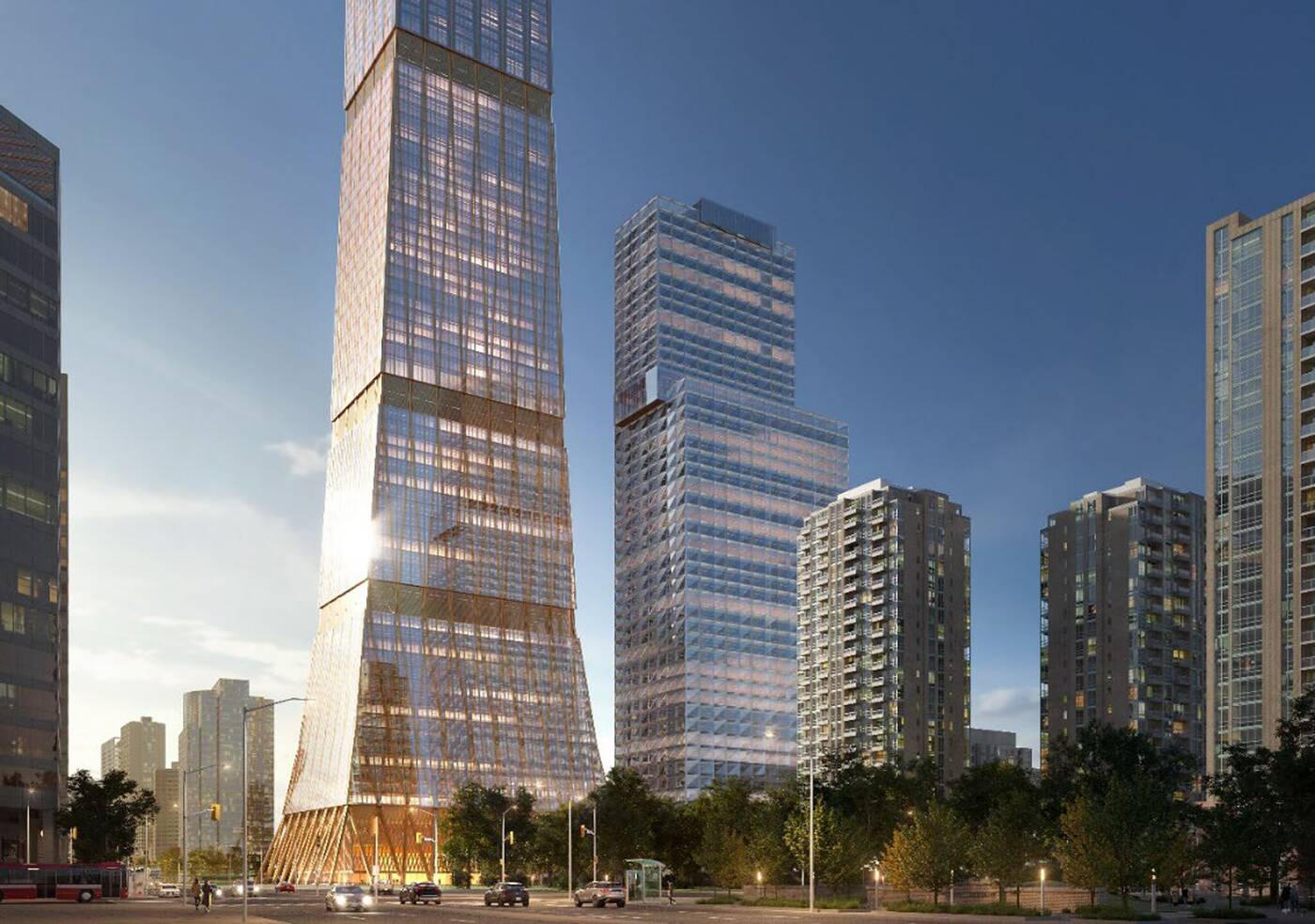
Architects come up with bold vision for 105-storey wood skyscraper in Toronto
An architecture firm has an ambitious vision to bring a 105-storey, zero-carbon tower made of timber to the Toronto skyline.
While there are no concrete (or, in this case, wood) plans to actually construct this behemoth, this enormous vision offers a glimpse into how the city can stay its current course of Manhattanization without further contributing to climate change.
A presentation for the Council on Tall Buildings and Urban Habitat (CTBUH) Hybrid Workshop Conference back in May by Craig Applegath, Founding Partner at architects Dialog, outlines a prototype for a gargantuan tower that meets a call to action.

Applegath asks, "How can we design a mixed-use high-rise building using wood, steel, concrete and other advanced materials that maximizes the overall use of sustainably harvested wood by volume in high-rise construction in the most cost-efficient, energy efficient, low carbon, and elegant manner, that is also conducive to human wellbeing, and the wellbeing of the environment?"
Dialog and partner EllisDon's purely conceptual proposal would theoretically be constructed atop the current TTC bus terminal at Finch subway station, using a newly-patented hybrid timber panel system, or HTPS.

The federal government has taken notice of this novel HTPS system, contributing $550,000 in funding to its development through the Green Construction through Wood Program.

"The buildings sector represents a significant source of Canada's emissions," said Jonathan Wilkinson, Minister of Natural Resources.
"The materials used to construct buildings are a big part of those emissions; using sustainable materials will help us achieve net-zero by 2050 in this sector and across the economy, while accelerating the economic opportunities presented by the low-carbon building products."
In the case of this or any other conceptual tower, these panels — constructed of cross-laminated timber or CLT — would be cut using CNC machines from a domestic supplier.
The concept skyscraper's hybrid structural design includes a dramatically flared base with framing for an open lobby.

Tower sections above are divided by outrigger floors with partial openings that allow wind to pass through and minimize wind impact. A crown surrounds mass tuned dampers that cut down on vibration and building movement.
As striking as the renderings may be, these conceptual images aren't meant to sell city planners or condo buyers.

Instead, they serve to inspire architects to think bigger with materials not traditionally associated with skyscrapers in a push to offset the carbon consumption often associated with industries like concrete and steel production.
Latest Videos
Latest Videos
Join the conversation Load comments







